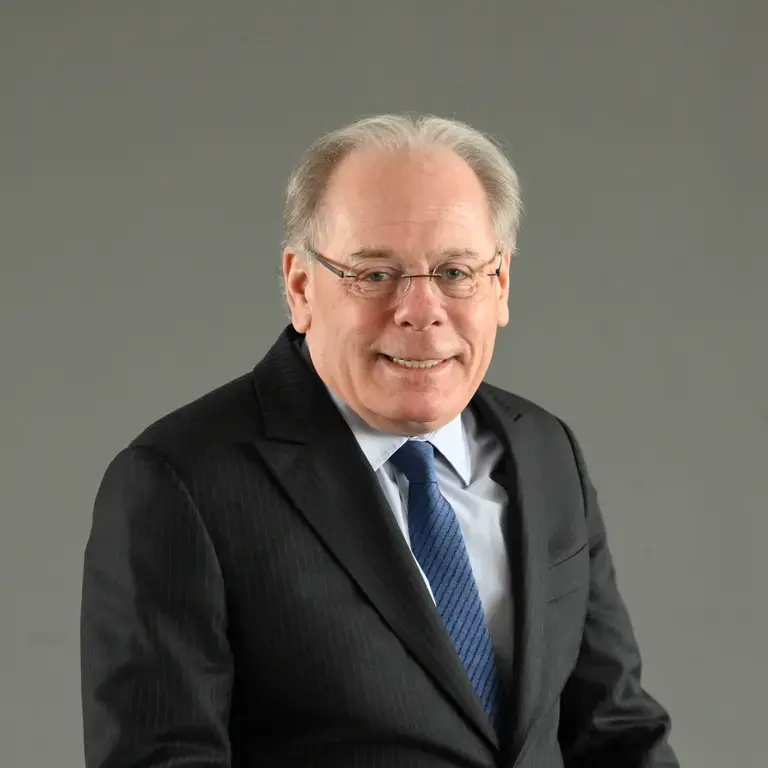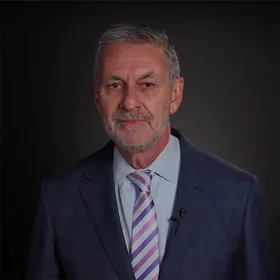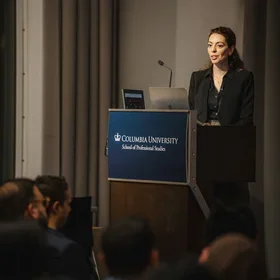By Steven Cohen, Ph.D., Director of the M.S. in Sustainability Management program, School of Professional Studies
At this point, it is difficult to know if the Trump administration’s attack on EPA, as well as most of the federal government, is real or performance art, but the anti-regulatory zeal of Trump, Musk, and their allies is undeniable. The frozen contracts and fired staff are also quite real. Environmental advocates enjoy public support for their goals, and public awareness of environmental issues, but have a habit of alienating potential supporters with extreme rhetoric and dire warnings of existential threats to human wellbeing. My view is that this high level of support is squandered by some environmental advocates who won’t take the steps needed to achieve consensus.
On the issue of climate change, a December 2024 Gallup poll demonstrates that most Americans understand the issue and the role of humans in causing greenhouse gas pollution. According to Gallup:
“Nearly two-thirds of U.S. adults are concerned about global warming or climate change, with 61% worrying about it “a great deal” (40%) or “a fair amount" (21%)…While less than half of Americans say climate change will pose a serious threat to their way of life in their lifetime, about six in 10 every year since 2016 have said the effects of global warming have already begun. Currently, 62% of Americans believe increases in the Earth's temperature over the past century are due mainly to "the effects of pollution from human activities." The remaining 35% ascribe them to "natural changes in the environment that are not due to human activities."… Public concern about climate change -- the percentage worried a great deal or fair amount -- exceeds 50% among most major demographic subgroups of Americans. Republicans are the only exception, with 28% worried. Still, the level of concern varies significantly by gender, age, education, race/ethnicity and region, with women, younger adults, those with postgraduate education, non-White adults and residents outside of the South expressing greater worry than their counterparts.”
Gallup reports that concern about climate change is highest among women and young people aged 18-29. Over 60% of the American public worries about climate change, and as noted above, 62% know it is caused by human activities. Despite partisan differences, The University of Chicago’s Energy Policy Institute’s 2024 poll conducted in partnership with The Associated Press–NORC Center for Public Affairs Research found that 78% of Americans believed that climate change was underway, with that belief held by 93% of Democrats and 62% of Republicans. The growing understanding of climate change is being driven by young Republicans and increases in the percentage of Americans experiencing extreme weather events. This direct experience with the impact of disasters made worse by greenhouse gas pollution is leading to a deeper public understanding of climate change.
Interestingly, the degree of support for action on climate change is misunderstood by many Americans. A study by Gregg Sparkman, Nathan Geiger, and Elke U. Weber published in the Journal Nature Communications found:
“…that roughly 80–90% of Americans underestimate the true level of concern for climate change as well as support for transformative climate policies like a carbon tax, 100-percent renewable energy mandates, and a Green New Deal. Not only are these misperceptions nearly universal in the country, but the magnitude is large enough to fully invert the true reality of public opinion: although polls show that a supermajority support these climate policies (66–80%), the average American’s estimate of public opinion suggests it is just a minority… In other words, supporters of major climate policies outnumber opponents 2 to 1, but Americans falsely perceive nearly the opposite to be true.”
In my view, the high level of support for climate policy is not perceived by the broad public due to the intensity of the views of climate deniers and the likely lower policy salience for supporters of greenhouse gas reduction policies. In short, deniers attract more attention than supporters. The support for environmental protection is deep, but the failure to act on this support is, in part, a reflection of proposed environmental policy proposals that some people perceive as an attack on their way of life.
Support for environmental protection extends beyond climate change to the more traditional concerns for air, water, and toxic pollution. According to a study by Brian Kennedy, Cary Funk, and Alec Tyson of the Pew Research Center:
“Majorities of Americans say that the federal government is doing too little to protect key areas of the environment. Overall, 63% of U.S. adults say the federal government is doing too little to protect the quality of lakes, rivers and streams. Just 7% say too much is being done here, while 29% say the federal government is doing about the right amount in this area. More than half of Americans also say that the federal government is doing too little to protect air quality (58%) and to protect animals and their habitats (55%).”
The partisan divide is always present, but more pronounced when Pew polled on the issue of environmental regulation. According to Kennedy, Funk and Tyson:
“Eight-in-ten Democrats and Democratic leaners view environmental laws as worth the cost. By contrast, just 25% of Republicans and Republican leaners say this, while 74% say they cost too many jobs and hurt the economy.”
This distinction highlights the need for environmentalists to reexamine their approach to environmental protection with the aim of communicating the connection of environmental protection to economic growth. When he issued his path-breaking PLANYC 2030, then-Mayor Michael Bloomberg effectively countered the perception of the economic growth—environmental protection trade-off by demonstrating the economic value of an environmentally sustainable city. Environmental protection was presented as an economic asset and a method of attracting people and businesses. The out-of-date trade-off between growth and the environment is widely believed but not based on facts and data. There is a widespread and growing understanding of our environmental problems, particularly among young people, but there is no consensus on what to do about them.
A 2023 Pew Research Center study provides insight into some of the causes of this communication disconnect. In that study, Giancarlo Pasquini, Alison Spencer, Alec Tyson, and Cary Funk asked why some Americans do not see the urgency of climate change. Their study was a unique, in-depth examination, with a distinctive methodology:
“To better understand the perspectives of those who see less urgency to address climate change, Pew Research Center conducted in-depth interviews with 32 U.S. adults who hold this view, including some who do not believe there’s evidence that the Earth is warming. Unlike much of our work on climate change, these interviews are not representative of all U.S. adults; rather, they are designed to provide deeper insight into the motivations and views of those most skeptical about climate change. The interviews revealed that language describing climate change as a crisis and an urgent threat was met with suspicion by many participants. The disconnect between crisis rhetoric and the participants’ own beliefs and experiences drove doubt about the motivations of the people making these claims, sowing suspicion and deeper mistrust.”
Despite their lack of urgency on climate change, this same group supported local environmental protection while opposing limits on their freedom to purchase non-electric vehicles. According to the Pew study:
“On policy, interviewees were open to government efforts to improve environmental quality, including air and water quality – especially when these efforts were at the local level. The conversations underscore areas of common ground around environmental protection, regardless of Americans’ level of concern about climate change. When it comes to measures aimed at transitioning the country toward renewable energy, interviewees stressed the importance of respecting individual freedoms – and individual choice – in any energy transition. This theme was underscored by criticism of policies like ending the production of new gas-powered vehicles.”
The views identified in the Pew study are reflected in my recent book, Environmentally Sustainable Growth: A Pragmatic Approach. In that volume, I focus on the need to build environmental politics around areas of agreement rather than areas of difference. These days too much environmental advocacy consists of arrogant performative rhetoric. Shaming people who own SUVs, misunderstanding cultures dominated by hunting, defacing art and public spaces, and viewing the use of fossil fuels as evil rather than as a practical necessity. Banning the purchase of motor vehicles powered by the internal combustion engine denies consumers the freedom of choice. Subsidizing the costs of electric vehicles and funding the development of renewable energy technologies are positive steps that can lower prices and provide incentives for influencing consumer behavior. Unfortunately, banning consumer choice has had the impact of delegitimizing subsidies for renewable resource-based technologies.
I often maintain that public policy doesn’t “solve problems,” it just makes them less bad. While scientists can test hypotheses and come to conclusions that “solve problems,” outside the laboratory, many of the variables in the public policy equation are unknown or unpredictable. That is why public policy analysis is a craft and not a science. That is also why some scientists make poor policy advocates. Climate scientists and advocates know how to “solve” the problem of greenhouse gas pollution, and they are not shy about forcefully presenting their solutions and belittling their opponents. Unfortunately, the solution to the climate problem is a cause of other problems. The transition to a renewable resource-based economy will take decades to implement. And climate change is not the only “existential” threat we need to address. Nuclear war, contagious viruses like COVID-19, ecosystem destruction, and poverty are equally important.
Instead of selling a contentious Green New Deal, we might focus on building a lower-cost, more reliable energy system. Rather than focusing on greenhouse gas pollution, we should call attention to the lower long-term costs of solar power and the need for homeowners to be able to power their houses off the grid during extreme weather events. When we transitioned from horses to motor vehicles, we never banned or taxed the horse. But government did get into the highway construction business. Henry Ford might have invented the mass-produced Model T, but without the government subsidy of paved roads, those cars would have never been sold. Electric vehicles will eventually drive the internal combustion engine out of the marketplace. With a supportive government in Washington, it would happen faster; with the current crowd in power, it will take longer.
The Trump administration is not concerned about environmental protection, and if their lack of support is exercised quietly, we won’t see much political pushback. But since this is a president who does nothing quietly, we can expect some loud and dramatic reductions in policies that protect the planet. If the result is visibly polluted air and unsafe drinking water, the American public will respond. When that happens, the administration will confront the deep and consistent support for a clean environment expressed by most Americans for over half a century.
Views and opinions expressed here are those of the authors, and do not necessarily reflect the official position of Columbia School of Professional Studies or Columbia University.
About the Program
The Columbia University M.S. in Sustainability Management program offered by the School of Professional Studies in partnership with the Climate School provides students cutting-edge policy and management tools they can use to help public and private organizations and governments address environmental impacts and risks, pollution control, and remediation to achieve sustainability. The program is customized for working professionals and is offered as both a full- and part-time course of study.



